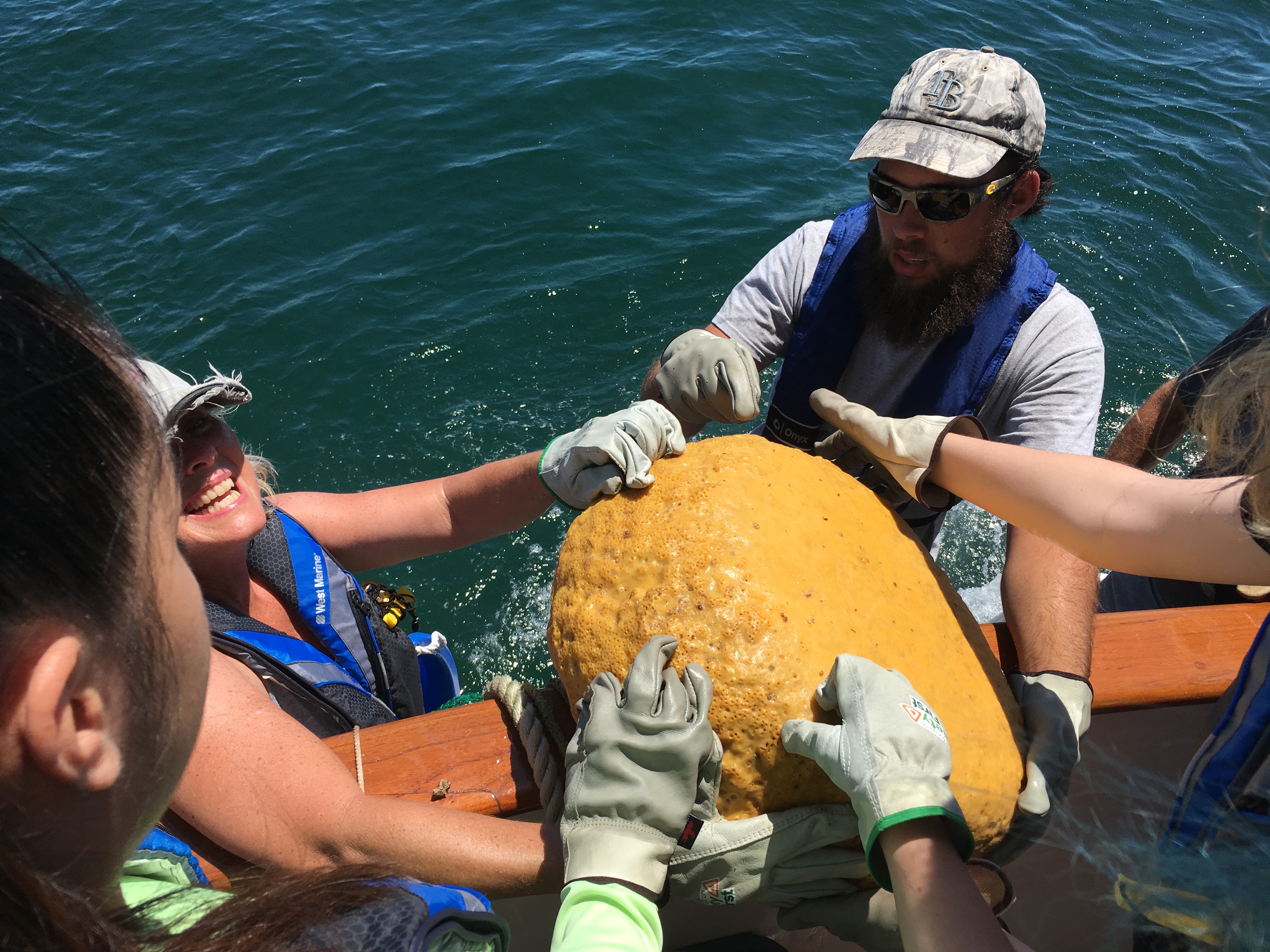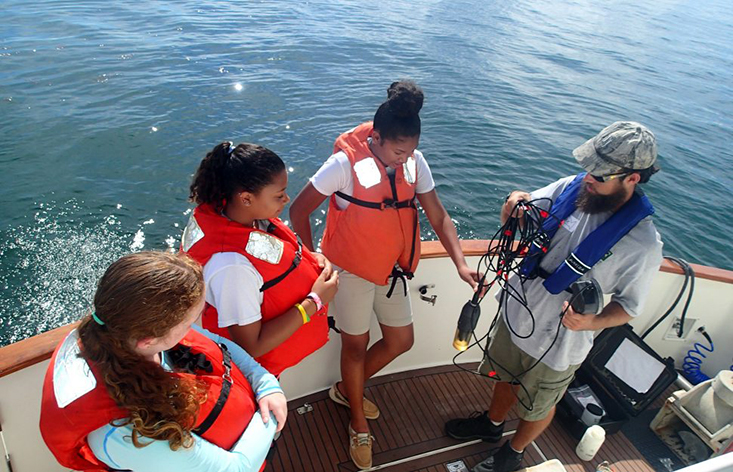This post was contributed by science mentor Michael Sipes.
This year I had the pleasure of working the Cruise Field Trip with fellow Science Mentors Kate and Kyle, our Co-Director Teresa, and special guest from the College of Marine Science, Elisha. Over the course of our three days at sea, campers had the opportunity to sample multiple research sites onboard the R/V ANGARI both inside Tampa Bay and passing underneath the Skyway bridge to sample in the Gulf of Mexico. At each site, we collected both biotic and abiotic data that will be analyzed by the campers later this summer.
Aboard the vessel, campers split into groups and rotated between three separate stations. At each station, the groups learned about the roles of different oceanographic features and processes while employing sampling techniques in analyzing them. Teresa’s “Collections” station headed up the water and sediment sampling, “Nutrient Analysis” was led by Kate and Kyle, while Elisha and I coordinated the “Environmentals”, such as gauging weather and water conditions.
Teresa’s “Collections” utilized Niskin bottles to collect surface and bottom water samples. They also deployed Shipek grabs to collect seafloor sediment samples, and worked with mesh nets that were successfully trawled to collect plankton samples.
Once the Niskin bottles were brought back to the surface and passed off to the “Nutrients” group, campers got the opportunity to independently analyze samples for concentrations of a variety of nutrients and test abiotic factors including pH, O₂, nitrates, phosphates, and CO₂. After having learned the concept of limiting nutrients, the groups, based on their derived data, got to observe first-hand the limiting nutrients for our sampling sites.
Concurrently, the “Environmentals group” collected hydrological and atmospheric data using several pieces of equipment such as an anemometer, Secchi Disk, a Hydrolab, among others.

Massive Sponge
In between sites, campers also had the opportunity to sieve through the collected sediment samples for granule size and composition comparison, identify several types of plankton under microscopes in the lab, and of course, my favorite, deploying an otter trawl to catch fish! Although we had more than our fair share of unexpected difficulties that arose such as multiple equipment malfunctions or losing our otter trawl (although quickly recovered soon afterwards!), our crew and campers quickly adapted and overcame each issue that presented itself making our voyage as successful as it was enjoyable.
Over our three days of cruises, we had memorable encounters with wildlife including dolphins jumping in the boat’s wake, sea turtle sightings, and handling several species of invertebrates and fish, some of which I had never even seen in person before. Notable catches included a massive sponge (≈2.5ft in diameter), a baby octopus, snapping shrimp, numerous species of crabs, sea robins, a soapfish (part of the grouper family), and several barbfish (part of the scorpionfish family)
A special thanks to all the wonderful OCG Staff that helped to make these trips such an amazing success, the “Young Oceanographers” who made hours of data collection fun and exciting, our special guest Elisha from CMS for assisting, and huge thanks to the ANGARI crew who made these trips possible!
